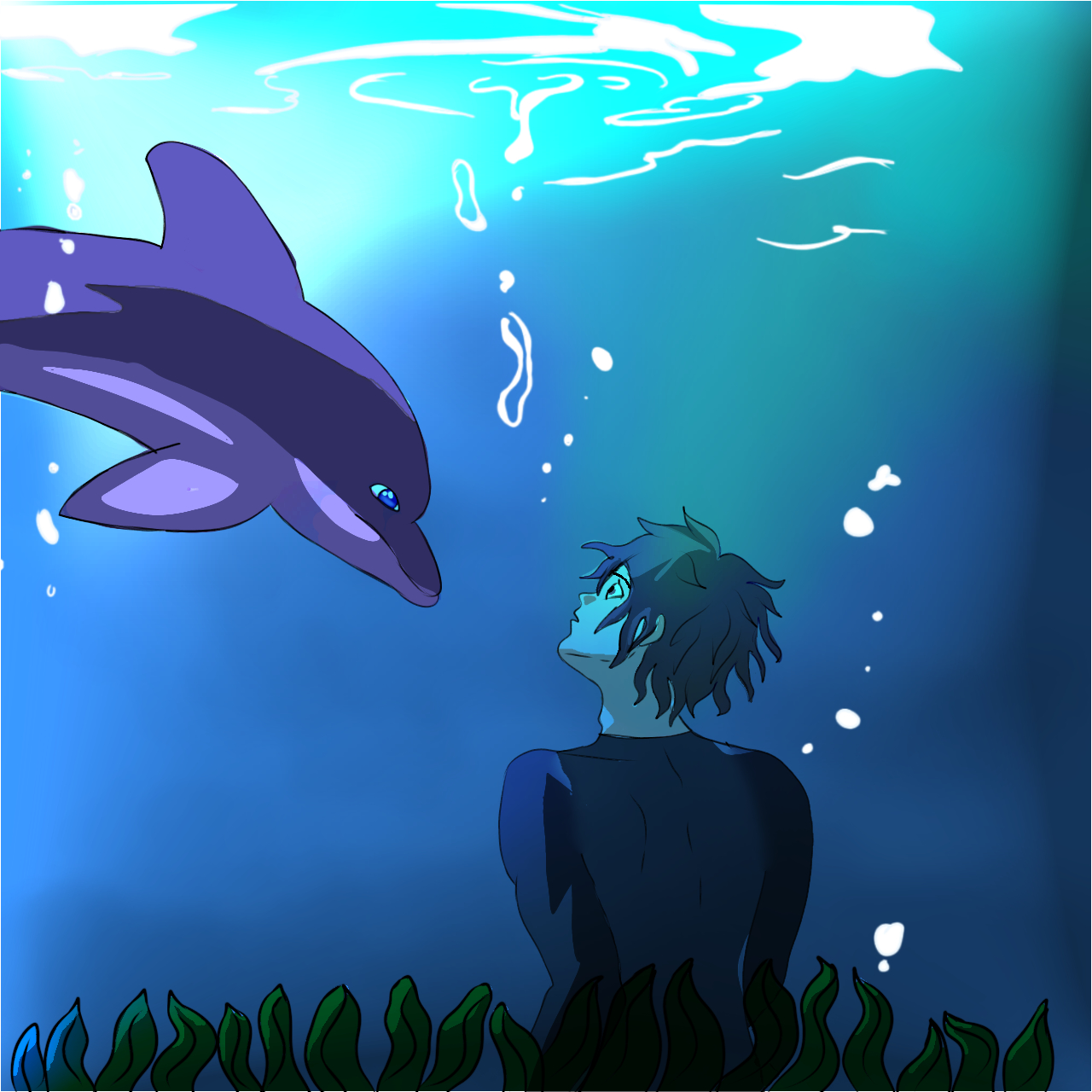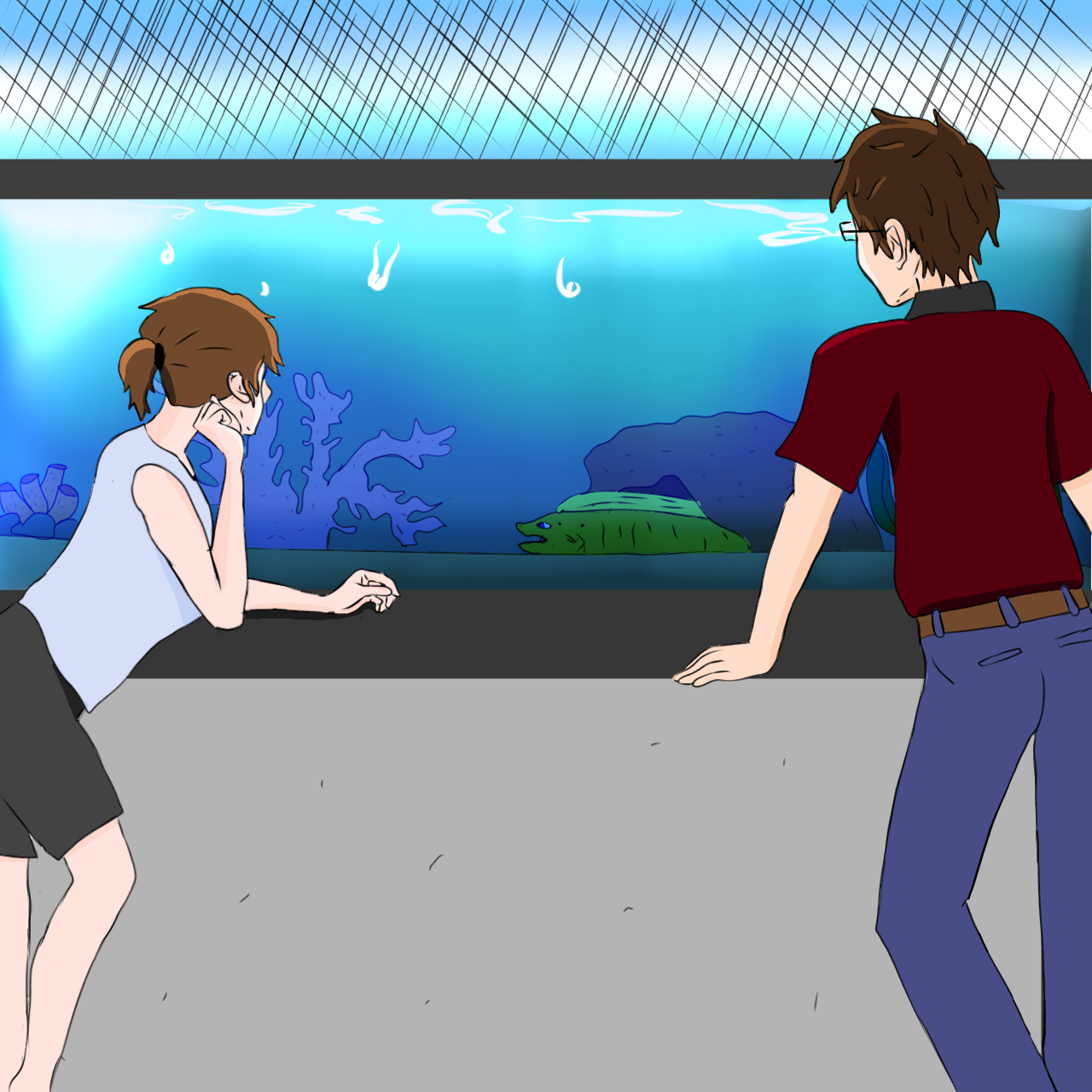Diving Deep

Illustration by Aurélie S
The origins of the school’s aquarium section
In this interview, we explore the fascinating story behind the creation of our school’s marine aquarium. Shilpin, who spearheaded this project, takes us through a journey that began in the 1970s with hands-on experiments, underwater exploration, and a passion for marine life. From testing a student-built submarine to catching the first fish, this is the story of how a simple curiosity grew into a beloved feature of our school.
What brought you to Pondicherry, and how did you come to settle here?
My journey to Pondicherry began when I was just seven years old. I came to visit my grandparents, who had been living here for quite some time, having settled in the Ashram during the 1930s and 1940s. From the moment I arrived, I felt a deep sense of belonging. There was something about the peace and spiritual atmosphere of the place that resonated with me. Instead of returning home, I decided to stay and make this my home. I joined the Sri Aurobindo International Centre of Education in December 1962, during the beginning of the new academic session, which marked the start of a new chapter in my life here.
How did you go about starting the aquarium?
The marine aquarium section started and grew in a very organic way. In the early 1970s, there were very unique experiments going on in the then Free Progress system. A few dedicated teachers and an enthusiastic group of students pursued their interests as practical projects, which led to hands-on learning. This group had made scale models of the Apollo program's rockets and capsules for a start. Then another batch wanted to go in the opposite direction, so a working submarine was built.
Now this submarine had to be tested in the water, and since the group was too young and inexperienced to go underwater, some older (bad) people were called in to do the in-water testing. This group, already into underwater diving (which wasn't considered ‘ashram-legal’), swam in the sea every morning, no matter the conditions. We loved body surfing, and many of us later took part in swimming pool competitions, setting or breaking records, or at least placing in the top six.
Earlier, a French journalist named Monsieur Hubert Noelhan, living in New Caledonia, came to the Ashram and gave diving masks to some of our group, as he was into shell collecting. This simple introduction to diving slowly grew into a passion for underwater exploration. By the time the submarine was ready, we were too, and we helped test it. In its final, successful dive, it went 4 meters underwater and resurfaced on its own. (The submarine is now preserved in a glass cabinet in the aquarium section.)
During the submarine testing, we saw fish, crabs, and other marine life, which sparked the idea to start a marine aquarium. The official start of the sea aquarium project came after the submarine, when Kake (also known as Promesse), one of the teachers, acquired a large aquarium from Dr. Sanyal, who used to keep freshwater fish. The aquarium was made with an iron frame and glass sealed with tar. We brought it to a room upstairs, then carted buckets and vessels full of seawater from the beach in front of the French Consulate. After filling the tank, we went to the old broken pier opposite the Gandhi statue and collected living mussels, starfish, and other creatures.
Everyone was amazed by the sight of marine life in the aquarium, but the next day, everything had died, and the water had become murky and foul-smelling. After cleaning it up, we realized we had no idea how to properly maintain a marine aquarium. There wasn’t much information available at the time, but word spread, and the Ashram reached out to its Paris center for help. They connected us with an aquarium store that sold us a special seawater pump and filters, which were essential for maintaining marine life in a closed system.
Getting the equipment to Pondicherry was another challenge, but we were fortunate when Gérard, who was driving a van loaded with supplies for Auroville, found space for the aquarium package. With this equipment in hand, we followed the store’s advice: run the filters for three weeks before adding any fish, and never stop the filter. Once the tank was ready, we caught our first fish by observing those that hid on the pier and carefully bagging them.
The fish survived, and we began feeding it live clams, which local fishermen used as bait. To this day, clams remain our preferred food for the aquarium’s inhabitants. Over time, we learned more about catching and caring for different species, including the scorpionfish, which we carefully collected in a glass jar. This marked the beginning of our marine aquarium journey, which has grown steadily ever since.
What were some of the biggest challenges you faced with the aquarium section?
The challenges with the aquariums would have been getting the seawater pumps and figuring out how to maintain a marine aquarium. Equipment was hard to get since nothing was made in India at that time, and funds were scarce to buy anything. Slowly, books started coming in, and they brought new ideas and methods. Later, magazines were gifted to us, which helped enormously with the latest information and techniques that we could understand and replicate. I personally learned to live by the Chinese saying, "The essence of knowledge is, once having it, to apply it."
How did you get into marine biology?
I never originally aimed for marine biology—it came automatically as part of the job. I did get influenced by some seniors, and spending so much time in the sea naturally sparked my interest. But I’m not a qualified or certified marine biologist; most of what I know is self-taught.
Working with the aquariums provides a broad foundation in many subjects—biology (fish and invertebrates), the chemistry of seawater, the physics of how pumps and gadgets work practically, and ecology through studying the behavior of aquarium inhabitants. The same applies when going diving. You also inevitably learn bits of human physiology and psychology when working underwater.
And finally, the sea is a great playground. You can dive, surf, sail, and purely enjoy the ocean planet—the only one we know of in the universe.

Illustration by Aurélie S